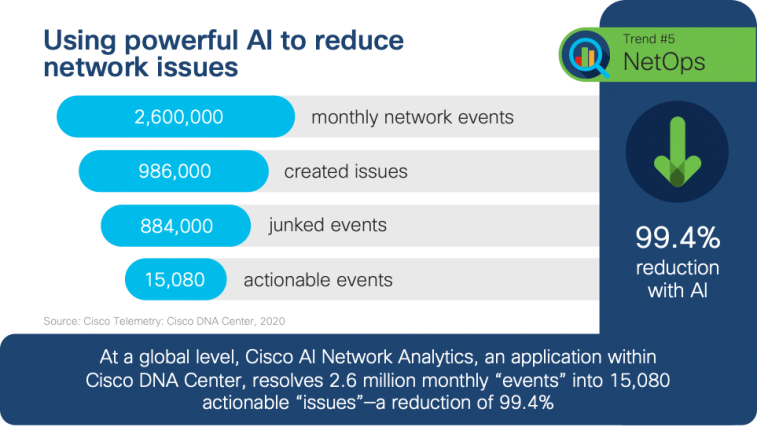- The Growing Threat of AI-powered Cyberattacks in 2025
- I test tablets for a living and this is the Samsung tablet I recommend the most
- The Cost of Ignoring Patches: How State and Local Governments Can Mitigate Damaging Security Breaches
- I turned this 98-inch TV into an immersive at-home theater system (and it's $1,500 off)
- You can save $30 on the Apple Pencil Pro right now
Leveraging AI-powered network analytics for business resilience – Cisco Blogs

Our hyper-connected world
Have you noticed how many smart devices you have connected to your home network lately? The other day, I stopped to count and realized that over the past year I’ve added over 50 different devices to my home network. 50.
Sprinkler systems, sound systems, lighting, thermostats, cars, robot vacuums, smartwatches, security locks, alarms, doorbells, and cameras. All of those in addition to the usual suspects like smart TVs, tablets, home assistants, and phones. I’ll admit, I’m enamored by technology. Using it in increasingly diverse and creative ways is almost a hobby for me.
The more devices we add, the more we depend on our network
It’s great when it all works of course, but when it doesn’t, it’s a nightmare. If our home network started having issues, or worse, if our home network got hacked—it would be more than a little disruptive. Even more so now that I have been working from a home office for the past 12 months and rely on a secure, reliable, and consistent experience to our productivity applications and collaboration tools
The point I’m suggesting is that what is happening in the home is just a microcosm of what’s happening on larger enterprise networks. As digital transformation continues to drive the adoption of cloud, IoT, big data, and mobility – distributed and diverse applications, users, things, and processes continue to be added to the network.
Consider some of these staggering stats. When we took a telemetry snapshot back in June from 190 large enterprise networks, on average they were managing 330 applications and 106,000 clients. Each of those 330 applications is increasingly made up of numerous interconnected microservices, each required to deliver the full application experience.
Looking at the trends from a broader perspective, by 2023 the number of devices connected to IP networks will be more than three times the global population, with half of those devices and connections being machine-to-machine (IoT). [i] And now also consider the added complication that with increased cloud adoption and remote work the majority of networked transactions either emanate or terminate outside of the traditional enterprise network. So NetOps teams need greater visibility and analytics for the public networks they are connected to as well.
AI is all about the experience
With all this growth and complexity, it’s becoming increasingly obvious that maintaining service levels without the helping hand of artificial intelligence won’t be sustainable. And that’s especially true during times of disruption or crisis.

In our latest 2021 Global Networking Trends Report: Business Resilience Special Edition we found that during July enterprises averaged 4,400 wireless-related events. Think of all the manual effort that it requires to research each of these, figure out which ones are relevant, and then remediate them. That’s quite a burden on your network operations team and it’s taking them away from doing more valuable activities like defining, activating, and monitoring business-impacting policies for new and existing applications.
Per IDC Research, for 17% of infrastructure failures, the time to repair is in days rather than hours.[ii] In our 2020 report, 73% of teams spend more than half their time just maintaining the status quo of the network. Given that time back, IT leaders stated they would prioritize their network teams’ focus on multicloud, accelerating application deployments, and better protecting the network, applications, and data.
It’s not if, but when
If the level of complexity hasn’t caught up with your network yet, it’s only a matter of time. It’s easier to invest the resources and be out in front of what’s coming rather than experiencing the misery of trying to play catch-up later. For those 4,400 monthly events, what if AI in your network could reduce the alert noise by 99.4%? Cisco’s AI-enabled analytics is already rationalizing these mountains of events into a handful of actionable issues for many of our customers. Reducing the time to troubleshoot as well as providing the workflows to quickly and accurately remediate these issues. And because every network is unique, the AI-enabled responses are tailored for your environment.
Want to learn more about other ways an intent-based network enables your organization to be more prepared and resilient in the face of whatever comes next? Get your complimentary copy of our 2021 Global Networking Trends Report: Business Resilience Special Edition.
Check out our Cisco Networking video channel
Subscribe to the Cisco Networking blog
Share:

